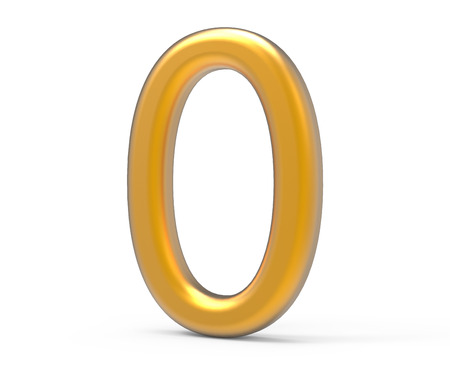Introduction: The Enchanting Curiosity of British Palms
Throughout the winding corridors of British history, curiosity has always found a way to flourish—sometimes in the pages of a novel, at other times in the gentle clasp of a hand. The ancient art of palmistry, or chiromancy, has long held a special place in the hearts and hearths of Britain’s people. From bustling London markets echoing with the laughter of street readers, to the candle-lit studies of Victorian scholars, Britons have often turned their gaze to their own palms in search of meaning, destiny, and perhaps a whisper from fate itself. Today, we embark on a captivating journey, not just through time but through touch—exploring what the hands of Britain’s most iconic figures might reveal about their character, fate, and the indelible marks they have left upon the world. In this series, we’ll weave together folklore and fact as we delve into the hand shapes of legendary personalities, inviting you to imagine how their very palms may have shaped our shared story.
2. Winston Churchill: The Defiant Bulldog’s Palm
Winston Churchill, the indomitable Prime Minister who steered Britain through its darkest hours, has long been associated with unyielding grit and unwavering resolve. While many know him for his rousing speeches and iconic V-sign, few have pondered what his hands—those very tools of command—might reveal about his inner world.
The Palm of Perseverance
Churchill’s reputed hand shape is often described as broad and square, a classic sign in palmistry of practicality, determination, and a no-nonsense attitude. His fingers were said to be short yet sturdy, echoing the bulldog spirit so celebrated by the British public during World War II. In palmistry, such a combination hints at a person who acts decisively and trusts their instincts—a fitting description of Churchill’s wartime leadership.
Palm Features and Their Symbolic Meanings
| Feature | Description | Palmistry Interpretation |
|---|---|---|
| Broad Palm | Wide across the base, solid build | Strength, resilience, grounded approach |
| Square Fingers | Short, sturdy digits | Practicality, directness, reliability |
| Deep Head Line | A pronounced line running across the palm | Keen intellect, strategic thinking |
| Long Life Line | Sweeping arc from thumb to wrist | Vitality, stamina under pressure |
The Hand as a Mirror of Character
The shape and lines of Churchill’s hands seem almost poetically aligned with his legacy. Just as he gripped his cigar or raised his hand in defiance against adversity, his palms may have carried the story of a soul forged in challenge. In British culture, where stoicism and wit are prized virtues, Churchill’s hands could be seen as physical embodiments of these traits—each crease a chapter in the saga of national resilience.
So next time you hear tales of Churchill’s courage or see his statue in Parliament Square, imagine what secrets lay nestled within those steadfast palms—a reminder that sometimes, destiny can be read not just in words or deeds, but in the very lines etched upon our hands.

3. Queen Elizabeth I: The Virgin Queen’s Royal Grasp
When pondering the enigmatic legacy of Queen Elizabeth I, one is often drawn to her striking portraits, each capturing a woman of power and poise. Yet, for those attuned to the subtle language of hands, it’s intriguing to consider what her palms might have revealed about the destiny woven into her reign. Historians note that Elizabeth’s hands were elegant yet strong, with long, slender fingers—a trait often associated in palmistry with intellectual acuity and refined judgement. Her intellect line, if examined through the lens of legend and surviving depictions, would have been deep and clear, signifying her razor-sharp wit and unwavering resolve in matters of statecraft.
It is said that the fate line—often called the line of destiny—runs more pronounced on those who carry the weight of a nation upon their shoulders. For Elizabeth, whose sovereignty was constantly tested by plots and alliances, such a line would surely echo her unyielding sense of purpose. Some accounts suggest her hands bore few callouses; a symbol not only of royal privilege but also an indication that her power lay not in brute force but in strategic command and diplomatic finesse. Her thumb, likely well-developed at its base, would reflect both willpower and adaptability—qualities she displayed throughout her turbulent rule.
In the realm of spiritual intuition, Elizabeth’s reputedly high-set mounts under the fingers—particularly beneath Jupiter (the index finger)—would suggest ambition tempered by wisdom. This “Jupiterian” prominence hints at a leader destined to shape history and govern with both vision and caution. British folklore sometimes whispered that to touch the Queen’s hand was to feel an electric charge—a mythic testament to her legendary charisma and almost mystical presence.
Through the symbolic art of palmistry, we glimpse how Elizabeth’s hands were perhaps an extension of her legacy: finely balanced between intellect and destiny, power and restraint. Her grasp shaped an era—the Elizabethan Age—and even now invites us to imagine how much our own paths might be etched into our palms.
4. William Shakespeare: The Bard’s Artistic Hands
When we conjure the image of William Shakespeare, the legendary Bard of Avon, it is tempting to envision not only his quill and parchment but also the very hands that penned some of the world’s most enduring plays and sonnets. While there are no surviving casts or detailed drawings solely devoted to Shakespeare’s hands, historical accounts and artistic depictions often present him with long, expressive fingers—characteristics closely aligned with what British palmistry lore calls the “artistic hand.”
The Artistic Hand in British Palmistry
British palmists have long associated certain hand shapes with creative genius. The so-called “artistic hand” is typified by slender palms, tapered fingers, and pronounced flexibility—a physical echo of a mind attuned to imagination and subtlety. It is said that such hands denote sensitivity, intuition, and a restless pursuit of beauty.
Depictions and Accounts of Shakespeare’s Hands
Accounts from Shakespeare’s contemporaries noted his nimble dexterity as both actor and playwright. Portraits like the Chandos and Droeshout images, though idealised, tend to depict elongated fingers poised in gestures suggesting eloquence and artistry. According to Victorian palmistry texts still referenced in Britain today, these qualities would be interpreted as follows:
| Hand Feature | Palmistry Meaning | Shakespearean Connection |
|---|---|---|
| Long Fingers | Love of detail; appreciation for language and nuance | Mastery over poetic metre and wordplay |
| Tapered Tips | Sensitivity; imaginative vision | Creation of vivid characters and worlds |
| Supple Joints | Adaptability; open-mindedness | Genre-spanning works from comedy to tragedy |
| Narrow Palm | Aesthetic sensibility; artistic temperament | Enduring influence on English arts and culture |
A Mirror to Genius?
In British folklore, the notion persists that one’s hand is a map not only of fate but also of innate talent. In Shakespeare’s case, even the imagined contours of his hands have become a symbol—an extension of his unparalleled creativity. Whether real or reconstructed through collective memory, the shape of his hands continues to fascinate those who seek clues to his genius among the lines and curves that shaped literary history.
5. Florence Nightingale: Healing Hands of Compassion
In the gentle glow of a Victorian lamplight, Florence Nightingale’s hands moved with quiet determination—healing, comforting, and guiding. To reflect on her legacy is to imagine palms that were both strong and tender, shaped by years of tireless service and intuitive care. What might her hands have revealed about her soul’s deepest calling?
The Nurturer’s Palm: A Glimpse into Her Spirit
It is said that those who are natural caregivers often possess broad, warm palms and long fingers—signs of empathy, adaptability, and a profound desire to heal. Nightingale’s hands, moving through dark hospital wards, must have mirrored her inner light. The lines crossing her palms could be imagined as rivers of compassion, flowing from her heart to those in need.
Intuitive Skill: Healing Beyond Medicine
Florence was more than a nurse; she was an intuitive healer. Her hands were tools of both science and spirit—capable of administering remedies but also of soothing fears. In the ancient art of palmistry, a prominent Mount of Venus (the padded area at the base of the thumb) signals warmth, vitality, and devotion to others. One can envision Nightingale’s Mount of Venus as pronounced—a physical echo of her boundless care.
A Legacy Written in Touch
Nightingale’s intuitive skill was not just in what she did, but in how she touched lives. Each gesture, each gentle pressure of her fingertips, was a silent promise: “You matter.” Her hands may have appeared delicate, yet they carried the strength to transform suffering into hope—a testament to the powerful connection between one’s inner calling and the shape their hands take. Through Nightingale, we remember that healing begins not only with medicine, but with compassion written into every line and curve of our hands.
6. David Attenborough: A Natural Storyteller’s Palm
Among Britain’s most beloved figures, Sir David Attenborough is revered not only for his mellifluous narration but also for his innate curiosity and boundless reverence for the natural world. If we were to imagine the shape of his hand, we might envision long, elegant fingers paired with a broad palm—hallmarks of what palmists call the “philosopher’s hand.” Such hands are often linked to those who possess a deep yearning to understand life’s mysteries, approaching the world with both intellect and wonder.
In British culture, where respect for tradition mingles with a quiet appreciation for eccentricity, Attenborough’s hands symbolise the bridge between analytical thought and heartfelt storytelling. His gentle manner suggests supple joints—indicative of flexibility in both body and mind—while the smoothness of his skin may allude to a life spent harmonising with nature rather than wrestling against it. In spiritual traditions, this kind of hand is often associated with wisdom keepers: those who hold space for ancient stories to be retold in new ways, weaving together past and future through attentive observation.
Attenborough’s inquisitive nature is echoed in his likely prominent Mercury finger (the little finger), which palmists say reveals communication skills and an ability to articulate complex ideas simply. In this sense, his hand becomes a conduit—a channel between the seen and unseen realms of the natural world, much as he serves as our guide on screen. The lines upon his palm might crisscross like rivers on a map, symbolising many journeys taken in search of understanding and connection.
Spiritually, Attenborough’s palm invites us to remember our place within the greater tapestry of life. The way he cradles a fledgling bird or gestures towards a distant horizon speaks not only to expertise but to reverence—a wordless prayer offered through touch. In British folklore, storytellers have always been regarded as bearers of wisdom and healing; so too does Attenborough’s hand remind us that every story begins with an open palm—ready to receive, ready to share.
7. Conclusion: Reflections on Fate, Heritage, and the Stories in Our Hands
As we journey through the lives and palms of Britain’s most iconic figures, a tapestry of fate and heritage unfolds before us. Each hand—be it Churchill’s resolute grip or Austen’s delicate lines—whispers stories that echo beyond mere chance, woven with the threads of ancestry, culture, and unyielding spirit. In true British fashion, let us pause for a moment of quiet reflection, much like a gentle evening stroll along the Thames or a fireside chat in an ancient cottage. The tales etched in our hands invite us to look beyond what is seen and listen to the myths murmured within our skin. Our palms are not just physical maps; they are living records of dreams, trials, and triumphs handed down through generations. Through the lens of spiritual curiosity and storytelling tradition cherished across these isles, consider your own hands: What secrets lie hidden in their creases? What legends might your lineage whisper through your fingertips? In embracing this ancient wisdom with an open heart and British wit, you may discover that your destiny—like those who have shaped our nation—rests quite literally in the palm of your hand.


